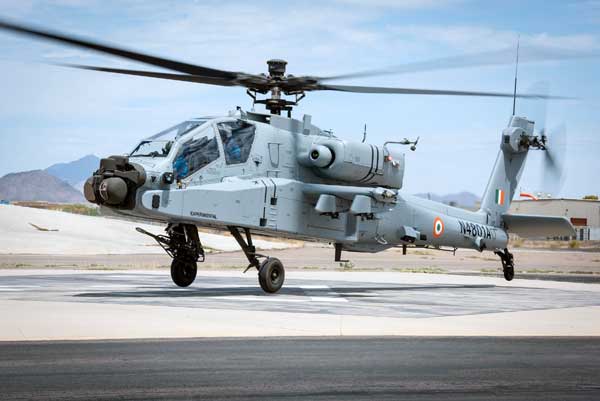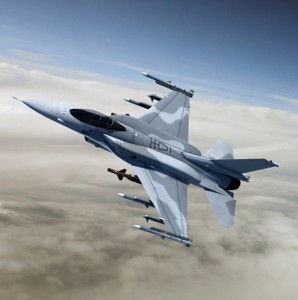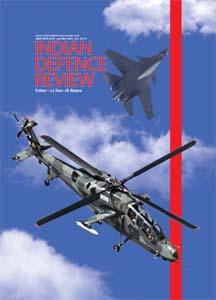
Boeing Presence in India
Boeing’s presence in India dates back over 75 years when Tata Airlines operated a Boeing DC-3 aircraft. Since then, Boeing has been a major player in India’s commercial aviation sector. Boeing’s military aviation connect in India began in 1940s, when the IAF acquired the T-6 Texan (Harvard) and the C-47 Skytrain transport, a military variant of the DC-3. With C-17 Globemaster III and Indian Navy’s P-8I maritime surveillance and anti-submarine aircraft, Boeing has become a great partner in India’s military mission-readiness. Additionally, the IAF operates the Boeing Business Jets for VVIP commitments. Boeing’s AH-64E Apache Longbow Attack Helicopters and CH-47F Chinook heavy-lift helicopters are on the way. The F-18 Super hornet is vying for the IAF and Indian Navy contracts. Boeing has set up Research & Technology Centre in Bengaluru.
At one stage, there was talk of US pressure on India to choose an American fighter for the MMRCA to assuage American concerns.
Boeing’s joint venture with Tata Advanced Systems Limited (TASL) is for aerospace and defence manufacturing including Unmanned Aerial Systems. TASL already has a contract to manufacture aero-structures for Boeing’s CH-47 Chinook and AH-6i helicopters. In September 2014, Dynamatic Technologies and Boeing inaugurated a plant to manufacture critical parts for the Chinook helicopters. Boeing created a facility with TAL Manufacturing Solutions Ltd to manufacture floor beams for the Boeing 787-9 Dreamliner. TAL also makes ground support equipment for the C-17. Dynamatic Technologies and Tata Advanced Materials Limited (TAML) have already delivered P-8I power and mission equipment cabinets, and TAML is making auxiliary power unit door fairings and composite tail-cones for the P-8I. Hyderabad-based Avantel Ltd has delivered the mobile satellite systems for P-8I. Hyderabad-based Cyient (formerly Infotech) has supported a number of critical design-engineering projects for Boeing airplanes, and currently provides design and stress support on the 747-8 Freighter and the 787-8 and 787-9. BEL is also on contract to provide F/A-18 flight deck cockpit panels. Hindustan Aeronautics Ltd (HAL) was the single-source producer of 757 over-wing exit doors. HAL has also manufactured the 777 up-lock boxes, F/A-18 gun bay doors, F/A-18 wire harnesses, P-8I weapons bay doors, and P-8I identification friend-or-foe transponders.
Lockheed Martin Presence in India
Lockheed Martin is the world’s largest defence contractor. Its defence area includes ATC systems, ballistic missiles, Precision Guided Munitions, Directed Energy Weapons, littoral combat ships, armoured fighting vehicles, combat and support aircraft, robotics, radars, electronic warfare, satellites and space launch vehicles, among others. It has been in India for over 25 years and is the pre-eminent designer, developer and manufacturer of the world’s most advanced fighter aircraft like the F-22 and . It has a joint venture company with TASL in India where airframe components for the C-130J and the S-92 helicopter are manufactured. Since production began in 2010, TASL has delivered 150 cabins fully Made-in-India. All C-130Js delivered to customers around the world have major aero-structure components from India. Lockheed is actively supporting the Digital India, Skill Development and Start-up India and Make-in-India programmes.
TASL has also signed a landmark agreement with the intent to join hands to produce the F-16 Block 70 in India to meet the IAF’s fighter needs. It will provide India the opportunity to produce the F-16 Block 70 aircraft for the global market as well. Meanwhile, they have committed to start producing F-16 wings in India in the next three years. F-16 production in India would position the Indian industry at the centre of the most ex
tensive fighter aircraft supply eco-system in the world with over 2,250 still flying globally.
The Indian Navy had selected Lockheed Martin’s Sikorsky S-70B Seahawk anti-submarine and anti-surface warfare helicopter for its multi-role rotorcraft requirement. Lockheed has been showcasing several other systems to the Indian Armed Forces. Lockheed Martin is a leader in UAV technologies, ranging from micro-UAVs such as the Stalker or to larger platforms such as the Reaper. They have been actively pursuing UAV opportunities for both the military and civil markets in India.
General Electric Company (GE)
GE is an American multi-national that operates in aviation, healthcare, renewable energy and transportation, among many others. GE’s presence in India dates back to 1902 when they installed India’s first hydropower plant. GE Aviation is the world’s leading producer of large and small engines for commercial, military, business and general aviation aircraft. GE’s F404-GE-IN20 engine powers the LCA Mk I and F414 will power the LCA Mk II.
COMCASA is valid for ten years. It allows India to procure and transfer specialised equipment for encrypted communications for US origin military platforms…
LEMOA & COMCASA
The Logistics Exchange Memorandum of Agreement (LEMOA) is a tweaked India-specific version of Logistics Support Agreement (LSA) which the US has with several countries with whom it has close military relations. LEMOA gives access to both countries to the designated military facilities for the purpose of refueling and replenishments. India and the US already hold large number of joint exercises during which they provide logistics support to each other. Currently this follows the tedious process of payments each time. Under LEMOA, book-keeping and payment mechanism will get smoothened. It covers port calls, joint exercises, training and Humanitarian Assistance and Disaster Relief. Additional contingencies may be added on case-by-case basis. India will have access to a large number of US facilities across the globe.
Communications Compatibility and Security Agreement (COMCASA) is a treaty which US signs with close allies to facilitate interoperability between militaries and for sale of high-end technology. It is the India-specific version of the much wider Communication and information on Security Memorandum of Agreement (CISMOA). COMCASA is valid for ten years. It allows India to procure and transfer specialised equipment for encrypted communications for US origin military platforms such as the C-17, C-130, and P-8Is, thus improving operational efficiency. Currently these platforms use commercially available communications equipment. Special provisions in the text safeguard security and national interests. It will also improve inter-operability and data acquired through such systems cannot be transferred to any entity without mutual consent. India had signed the General Security of Military Information Agreement (GSOMIA) in 2002. The last remaining agreement is on Basic Exchange and Cooperation Agreement (BECA) for geo-spatial cooperation.
CATSA
Countering America’s Adversaries Through Sanctions Act (CATSA) was passed in the US in August 2017. The CATSA mandates the US administration to punish entities engaging in significant transaction with the defence or intelligence sectors of Russia, North Korea and Iran. The Act does not have much flexibility. The US is conscious that historically, India was dependent on Russia for defence purchases. The National Defence Authorisation Bill, 2019, was passed to add flexibility. And it is not just India that is in that situation, there are other nations too. Despite being red-flagged, India went ahead with the S-400 Triumf air defence missile systems deal with Russia. The US was concerned that this could seriously complicate its ability to work on inter-operability. Discretion allows concession if a country is willing to reduce its dependence on Russian equipment. The two countries are now trying to find a way out to evade the provisions of CATSA in regards to the deal. At one stage, there was talk of US pressure on India to choose an American fighter for the MMRCA to assuage American concerns.
The US has thus been establishing military, economic, and diplomatic ties with countries adjacent to China…
Congruence and the Way Ahead
In 2012, US President Barack Obama initiated a foreign policy shift to ‘Look East’ to neutralise a rising China. The Pentagon deploys 60 per cent of US submarines in Asia. Funding for the US Pacific Command has been on the increase. The key areas of action in the US “Pivot to East Asia” regional strategy have been strengthening and re-balancing bilateral security alliances; deepening working relationships with emerging powers, including with China; engaging with regional multilateral institutions; expanding trade and investment; forging a broad-based military presence; and advancing democracy and human rights.
The US has thus been establishing military, economic, and diplomatic ties with countries adjacent to China. The Boeing F/A 18 E/F Super Hornet and Lockheed Martin F-16 Block 70 are contenders for the IAF’s 110 new fighters. The US has agreed to supply India with the General Atomics MQ-9 Guardian/ -B long-range Unmanned Combat Aerial Vehicle (UCAV). The MQ-9 has both land and sea variants, and can be armed with up to four AGM-114 Hellfire air-to-surface missiles and laser-guided bombs. China sees this as a ‘China containment policy’. The presence of US military in Afghanistan, Uzbekistan and Tajikistan; strengthened ties with South Korea and Japan; efforts to woo India and Vietnam is critical.
While the US needs India to contain China, India also wants to manage an increasingly assertive China. Rising China and common security concerns have brought the US, Japan, Australia, the ASEAN and India closer in adopting a strategic approach in the region. As the world economies need cheap Chinese goods, so does China need their markets. The bluff has to be called. The world’s biggest democracies finally stand on a shared platform; have some congruence in their world view and most importantly, feel the need to work together on many counts. Aerospace is the real place for joint action. And India and the US have taken a conscious first big step.






